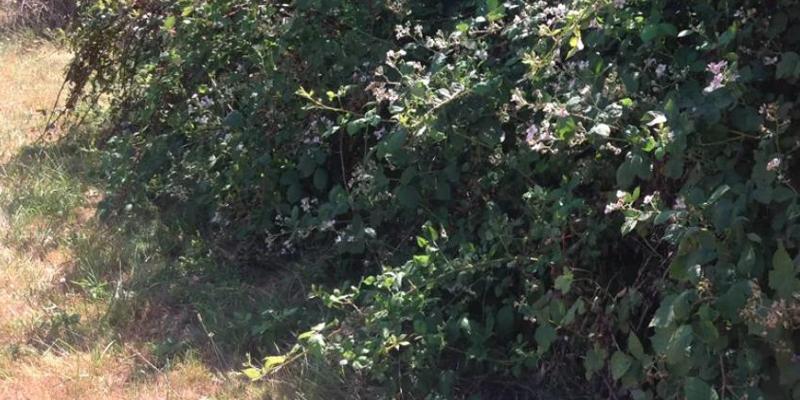
Control Himalayan Blackberry on your property now.
We’ve picked our fill of the sweet blackberry fruits, so it’s time to get serious about Himalayan blackberry management.
Now is an ideal time to manage blackberries on your property. Desirable native plants that co-exist with blackberries have largely died back or become dormant for the season. Baby birds have left their hidden nests, and the blackberry flowers and fruits are no longer attracting wildlife.
If you are looking for a chemical control to manage these plants, the best time is in the fall when blackberry plants are pulling their resources down into their roots. Use a targeted herbicide application and remember: ALWAYS FOLLOW THE LABEL and put safety first, for you and any unintended targets.
Goat eating blackberry vine (vet session)
Manual and Mechanical Control of Blackberry
For manual control, it is important to arm yourself against the sharp thorns by wearing thick gloves, sturdy long pants, and a long-sleeved shirt or jacket. Those who are unprepared will suffer the consequences of nasty scratches. Use board or plywood to mash down blackberry canes to access densely infested areas. If your ground is level or has a little slope, you may also be able to mow down the canes (sometimes a brush cutter is necessary). This will remove the bulk of the plant.
If you wish to use the mowing method for permanent control, you will need to repeat this process throughout the year and for several seasons to exhaust the energy in the root system. Remember to check for any nesting birds in the spring. Should you choose to use goats to remove the blackberries, you may still want to get rid of the old canes first and then let the goats periodically graze the new growth for long-term control.
If you choose to remove the entire plant, including the roots, you will have much easier access with the top growth removed. Digging or tilling can take out the root system, but be sure to remove as much root material as possible. Even small pieces can re-sprout, so try raking up all remaining bits. If you are working on a slope, make sure you have enough time in the fall to reseed any disturbed areas to avoid erosion caused by fall and winter rain. If not, root removal might need to wait until spring.
After the blackberry plants are removed, expect a flush of weeds in the old blackberry patch. A build-up of weed seed may remain dormant under the brambles for years and once exposed to sunlight they will sprout.
Removal of invasive Himalayan blackberry requires persistence and patience, but success comes to those who persevere!
Unmanaged blackberry forms a dense, thorny thicket.
Chemical Control of Blackberry
Because it is difficult to get rid of Himalayan blackberry, herbicides are often used to help manage it. Himalayan blackberry is susceptible to several systemic herbicides. Young canes are most susceptible but should only be targeted after reaching at least 3 feet in height to allow the herbicide to be drawn down into its root system. Plants should not be cut or removed for at least two weeks following an herbicide application.
Learn More
For more detailed information on hrbicide and other forms of Himalayan blackberry control, please refer to the Best Management Practices for Himalayan Blackberry on the WeedWise Website.

